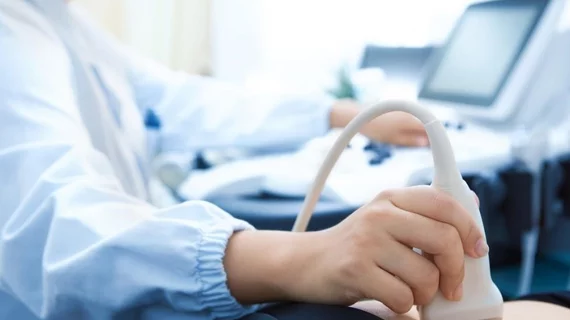Cardiac ultrasound study tags nearly 67% of COVID-19 patients with structural heart abnormalities
Structural heart abnormalities were spotted in nearly 70% of patients with COVID-19 who also underwent cardiac ultrasound imaging, according to an international study published Monday.
In fact, among the more than 300 individuals who received a transthoracic echocardiogram (TTE) at one of four Mount Sinai Health System hospitals in New York, 62.6% had a myocardial injury, with most showing damage at the time they were admitted.
The findings, published Oct. 26 in the Journal of the American College of Cardiology, should help doctors to more quickly identify patients at risk of cardiac injury and guide potential therapy.
"This is one of the first studies to provide detailed echocardiographic and electrocardiographic (ECG) data in hospitalized patients with COVID-19 and laboratory evidence of myocardial injury,” first author Gennaro Giustino, MD, cardiology fellow at New York’s Mount Sinai Hospital, said in a statement. “We found that among COVID-19 patients who underwent transthoracic echocardiography, these cardiac structural abnormalities were diverse and present in nearly two-thirds of patients.”
The authors noted that these ailments are associated with a higher risk of heart attack, pulmonary embolism, heart failure and myocarditis, in addition to an increased risk of death among hospitalized patients.
Giustino and colleagues retrospectively looked at TEE and ECG scans of 305 patients (median age 63 years old, 67.2% male) with confirmed COVID-19. In total, 190 (62.6%) had evidence of myocardial injury, with 118 patients showing damage during admission and 72 developing it while in the hospital.
Those with myocardial injury also tended to be older and were more likely to have a preexisting condition such as hypertension, diabetes or chronic kidney disease.
In terms of in-hospital mortality, those without myocardial injury passed away at a rate of 5.2%, compared to 18.6% for patients with the same injury but without TTE-detected abnormalities. That figure ballooned to 31.7% among those with both myocardial injury and TTE abnormalities.
The authors plan to continue following these patients and encouraged clinicians to use echocardiography to gather critical information on participants with heart complaints, including those on ventilators.
“Early detection of structural abnormalities may dictate more appropriate treatments, including anticoagulation and other approaches for hospitalized and post-hospitalized patients,” study co-author and Mount Sinai Physician-in-Chief Valentin Fuster, MD, added.

